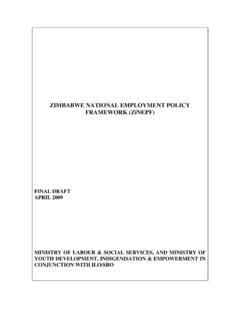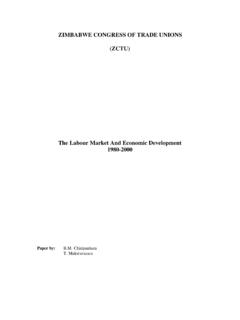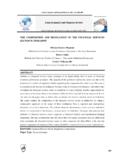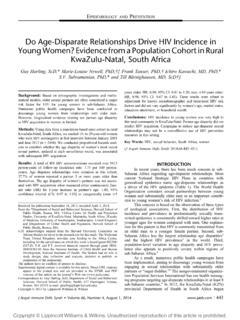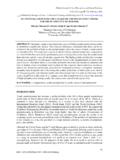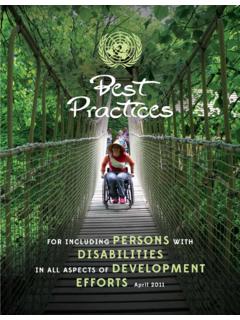Transcription of GIRLS AND YOUNG WOMEN - United Nations
1 There are billion YOUNG people (10-24 years old) in the world and the majority live in developing countries. They are the largest generation of youth in history. Approximately half of them 880 million are adolescent GIRLS and YOUNG WOMEN . These GIRLS and YOUNG WOMEN possess huge untapped potential. When educated, healthy, safe from discrimination and gender-based violence, and equipped with the right skills and opportunities, they hold the key to unlocking many of the world s most pressing problems: reducing poverty, advancing gender equality, catalyzing countries social and economic development, halting the spread of HIV, reducing maternal mortality, and ending violence against WOMEN , among many others.
2 As educated mothers, they will invest in the survival, education and success of the next generation. As leaders of today and tomorrow, they can be a force for social change. Yet despite the potential of GIRLS and YOUNG WOMEN , they are often overlooked in the planning and implementation of many development programmes, and are often excluded from participating in decision-making processes in their families and communities. Many youth serving programmes tend to benefit older, educated, urban, and largely male youth. Not only is investing in GIRLS and YOUNG WOMEN a human rights imperative, but it is one of the smartest investments any country can make.
3 Key Challenges Adolescent GIRLS face many challenges in their transition into adulthood. Doubly-disadvantaged by gender and age discrimination they often face diminished opportunities and choices. Their education is often HIGHLIGHTS There are billion YOUNG people (10-24 years old) in the world. Approximately half of them 880 million are adolescent GIRLS and YOUNG WOMEN . i Trends show that one in three GIRLS in developing countries (excluding China) are likely to be married before the age of 18 and one in nine GIRLS will marry before their fifteenth birthdayii.
4 In 2010, over 67 million WOMEN aged 20-24 had been married as GIRLS . If such trends continue, 142 million GIRLS will be married every year in the next decadeiii. Globally, YOUNG WOMEN aged 15 24 are most vulnerable to HIV, with infection rates twice as high as in YOUNG men, at This disparity is most pronounced in sub-Saharan Africa, where of YOUNG WOMEN are living with HIV, versus of YOUNG meniv. Each minute one YOUNG woman acquires HIV, accounting for 22% of all new HIV infections, with sexual transmission being the dominant mode of infectionv.
5 Figures on the magnitude of human trafficking are difficult to calculate, but using improved methodology, recent 2012 ILO estimates suggest that WOMEN and GIRLS make up 55 per cent of the estimated million people traffickedvi. Approximately 140 million GIRLS and WOMEN in the world have suffered female genital mutilation/cutting, with more than 3 million GIRLS in Africa annually at risk of the practicevii. GIRLS AND YOUNG WOMEN GIRLS and YOUNG WOMEN Page2 compromised and they are subject to serious health risks, and threatened by violence.
6 Their views and concerns are often unheard. Among the poorest countries, the Least Developed Countries, GIRLS primary completion rates remain low, at 62 per centviii. Even if GIRLS are in school, they are the first to leave when needed for domestic chores or to be caregivers, and are often forced to leave due to child marriage or Gender-based discrimination in the labour market, traditional practices, fewer opportunities and the lower value placed on WOMEN s economic contributions all leave YOUNG WOMEN with higher rates of unemployment or tied to traditionally unpaid, family-based Moreover, youth unemployment rates have proven more sensitive to economic shocks than adult rates.
7 And YOUNG WOMEN have more difficulty than YOUNG men in finding work. When YOUNG WOMEN do find work, it is often lower paid and in the informal economy, in unprotected, low-skilled Many countries that have improved education for GIRLS and YOUNG WOMEN also need to focus on school-to-work transitions. Gender inequality and discrimination are key determinants of health status. Each year approximately 16 million adolescent GIRLS give birth, the majority of which occur among married GIRLS in developing countries. Pregnancy- and childbirth-related complications are the number one killers of GIRLS aged 15 to Physically immature and often with few resources, the youngest, first-time mothers are most at risk.
8 Obstetric fistula, a devastating childbirth injury, affects an estimated million GIRLS and WOMEN in the world, and about half of the cases are among first-time Moreover, babies born to adolescent mothers face greater risks than those with older mothers: stillbirth and death are 50 per cent more likely for babies with mothers under age 20 than those with mothers 20 to 29 years Child marriage is a health issue as well as a human rights violation. Many YOUNG brides face poverty, ill health, abuse, unprotected sex carrying the risk of HIV, frequent pregnancies, an end to education and few positive life Trends show that one in three GIRLS in developing countries (excluding China) are likely to be married before the age of 18 and one in nine GIRLS will marry before their fifteenth birthday.
9 In 2010, over 67 million WOMEN aged 20-24 had been married as GIRLS . If such trends continue, 142 million GIRLS will be married every year in the next decadexvi. Child marriage is a form of violence not only because of its overall impacts that affect all aspects of a girl s life but also because it often results in very direct forms of physical, sexual and emotional violence. GIRLS who are married YOUNG often lack status and power in relation to their husbands and in-laws, resulting in increased risks to violence and abuse. WOMEN who marry early are more likely to be beaten or threatened, and more likely to believe that a husband might sometimes be justified in beating his wife.
10 This is especially true when there is a big age gap between the child bride and the It may also be worth mentioning that the social isolation that results from child marriage also often translates in child brides having little or no ability to leave abusive partners and secure social and legal support to remedy their situation. National Violence against Children Surveys show that among WOMEN aged 18 24 years, nearly 38% in Swazilandxviii 27% in Tanzaniaxix and 32% in Zimbabwexx reported experiencing some form of sexual violence before the age of 18. As much as 30 per cent of WOMEN report that their first sexual experience was forcedxxi Increasingly the data and evidence is proving that gender inequality is a driver of the HIV and AIDS epidemic, which is leading to higher infection rates among YOUNG WOMEN than YOUNG men.










